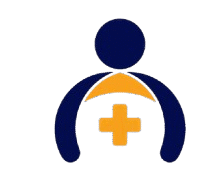Bedsore care at home,
Bedsores Care at Home: A Global Guide for Families and Caregivers
Worried about your loved one developing a bedsore? Or already caring for someone with one?
You’re not alone. Bedsores — also known as pressure ulcers — are common in people who are bedridden, recovering from serious illness, or unable to move easily. But with the right knowledge and gentle care, you can manage this safely at home and prevent further complications.
🩺 What Is a Bedsore?
A bedsore is an injury to the skin and the tissue underneath caused by continuous pressure. It usually forms on bony areas like the back, hips, heels, or elbows — especially when the patient stays in one position for too long.
Lack of blood flow due to pressure causes skin cells to die. Over time, this can lead to open wounds, infections, and severe pain.
Other causes include:
- Friction and shear when moving or adjusting the patient incorrectly
- Moisture from sweat or urine, softening the skin
- Poor nutrition and hydration
💡 Pause and Recall:
– Bedsores = Pressure + Time + Lack of blood flow
– Risk increases with friction, wet skin, and poor nutrition
– Common in bedridden or immobile patients
✅ How to Prevent Bedsores at Home
Prevention is always better than cure. These simple steps can make a huge difference:
- 🔄 Reposition the patient every 2–3 hours
- 🛏️ Use an air or alternating pressure mattress
- 🧼 Keep the skin dry and clean
- 🍲 Ensure the patient is well-nourished and hydrated
- 🩹 Check and inspect the skin daily
- 🚫 Avoid pulling or dragging the patient
🧾 Quick Checklist for Prevention:
– Reposition frequently
– Use proper mattress and support
– Maintain hygiene and nutrition
– Watch for early warning signs
🩹 How to Treat Bedsores at Home
If a bedsore has already developed, treatment depends on the severity or stage. Here’s how it’s usually managed at home:
1. Wound Dressing
Apply sterile, non-stick dressings to protect the wound and promote healing.
2. Negative Pressure Wound Therapy (NPWT)
A suction-based dressing that draws out fluids and infection, used for Stage 3 and 4 wounds.
3. Topical Oxygen Therapy
Delivers oxygen directly to the wound bed to help speed healing — especially helpful for diabetic or elderly patients.
4. Surgical Options (for severe cases)
- Debridement: Removal of dead or infected tissue
- Flap Reconstruction: Using healthy skin to cover large or deep sores
⏸️ Let’s Recap:
– Daily wound dressing is essential
– NPWT and oxygen therapy for deeper wounds
– Surgery only if wounds don’t respond to basic care
🧓 Bedsore Care in Elderly Patients
Bedsore care is not just about the wound — it’s about respect, dignity, and emotional care. Speak gently. Ensure privacy. Create routines. Be present.
At At Home Care, our trained nurses bring conversation and warmth to healing — globally.
📞 When to Call for Medical Help
- Skin turns dark red, black, or purple
- There’s pus, foul smell, or increased wound size
- Fever, chills, or signs of infection
- Sudden confusion in elderly patients
🏠 Need Help at Home?
Feeling unsure? Need a nurse? Visit AtHomeCare.in — we’ll guide you step by step.
🙏 Final Words
Caring for someone with a bedsore is tough — but possible. With proper guidance and a caring heart, healing happens faster, and at home, it happens better.
Because real healing starts with love.
